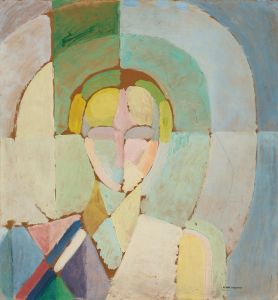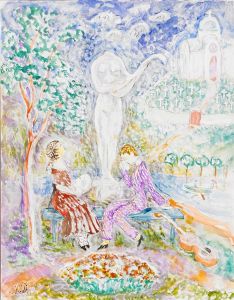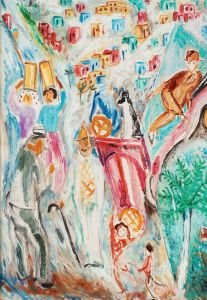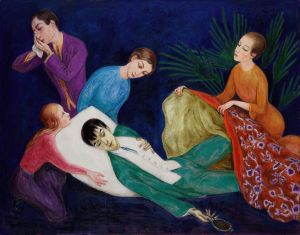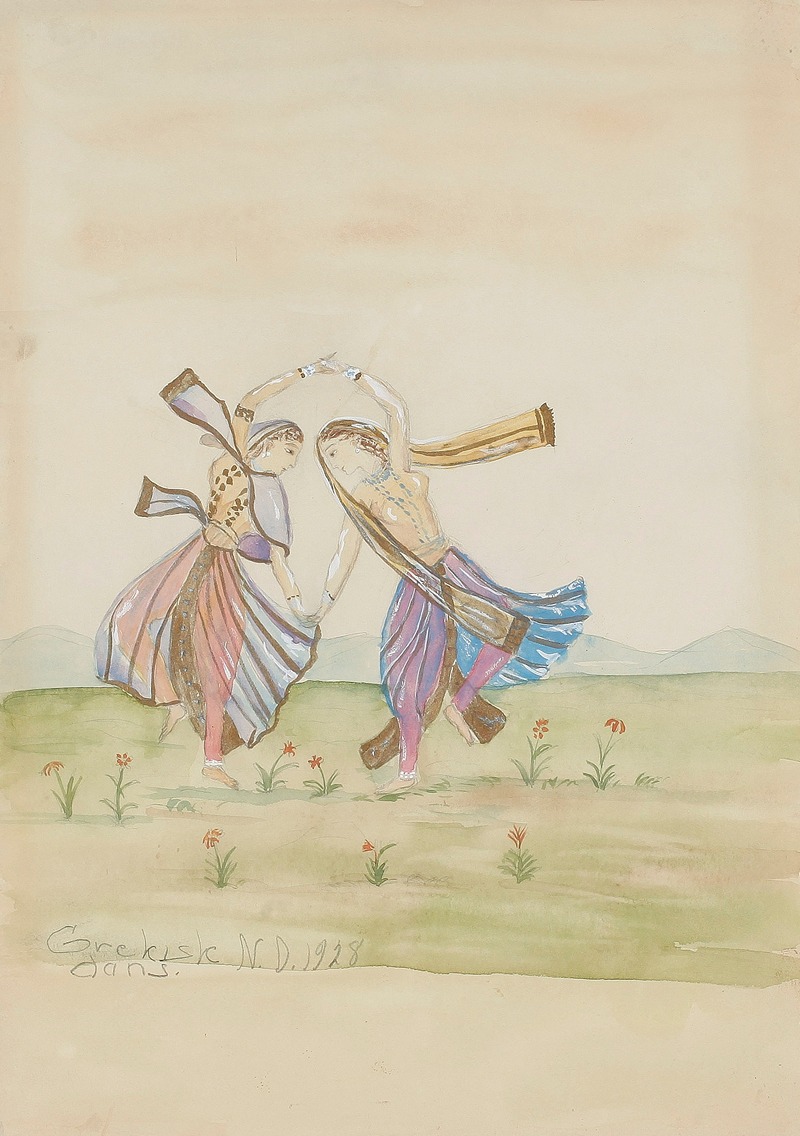
Grekisk dans
A hand-painted replica of Nils Dardel’s masterpiece Grekisk dans, meticulously crafted by professional artists to capture the true essence of the original. Each piece is created with museum-quality canvas and rare mineral pigments, carefully painted by experienced artists with delicate brushstrokes and rich, layered colors to perfectly recreate the texture of the original artwork. Unlike machine-printed reproductions, this hand-painted version brings the painting to life, infused with the artist’s emotions and skill in every stroke. Whether for personal collection or home decoration, it instantly elevates the artistic atmosphere of any space.
Nils Dardel (1888-1943) was a prominent Swedish painter known for his distinctive style that often combined elements of modernism with a whimsical, narrative quality. One of his notable works is "Grekisk dans" (Greek Dance), created in 1919. This painting is a vivid example of Dardel's unique artistic vision and his ability to blend cultural influences with his own imaginative flair.
"Grekisk dans" depicts a lively scene of dancers engaged in a traditional Greek dance. The composition is characterized by its vibrant colors and dynamic movement, capturing the energy and rhythm of the dance. Dardel's use of bold lines and exaggerated forms adds a sense of drama and excitement to the scene, making it a captivating piece that draws the viewer into the moment.
The painting reflects Dardel's interest in different cultures and his ability to incorporate these influences into his work. During the early 20th century, there was a growing fascination with exoticism and the exploration of non-Western cultures in European art. Dardel's "Grekisk dans" can be seen as part of this broader trend, showcasing his interpretation of Greek cultural elements through his distinctive artistic lens.
Nils Dardel was known for his eclectic style, which often included elements of fantasy and surrealism. His works frequently featured vibrant colors, intricate patterns, and a sense of movement, all of which are evident in "Grekisk dans." The painting not only captures the physicality of the dance but also conveys a sense of joy and celebration, reflecting the cultural significance of dance in Greek society.
Dardel's career was marked by his travels and exposure to various artistic movements. He studied at the Royal Swedish Academy of Fine Arts in Stockholm and later spent time in Paris, where he was influenced by the avant-garde art scene. His work often defied categorization, blending elements of expressionism, symbolism, and modernism. "Grekisk dans" is a testament to his ability to synthesize these influences into a cohesive and engaging composition.
The painting is part of the collection at the Moderna Museet in Stockholm, Sweden, which houses a significant number of Dardel's works. The museum's collection provides insight into the breadth of his artistic output and his contributions to Swedish and European art. "Grekisk dans" remains one of Dardel's celebrated pieces, appreciated for its vibrant depiction of cultural expression and its place within the broader context of early 20th-century art.
In summary, "Grekisk dans" by Nils Dardel is a vivid and dynamic painting that captures the essence of a traditional Greek dance. Created in 1919, the work reflects Dardel's interest in cultural exploration and his ability to blend various artistic influences into a unique and engaging composition. The painting is a notable example of Dardel's eclectic style and his contribution to the modernist movement in European art.





